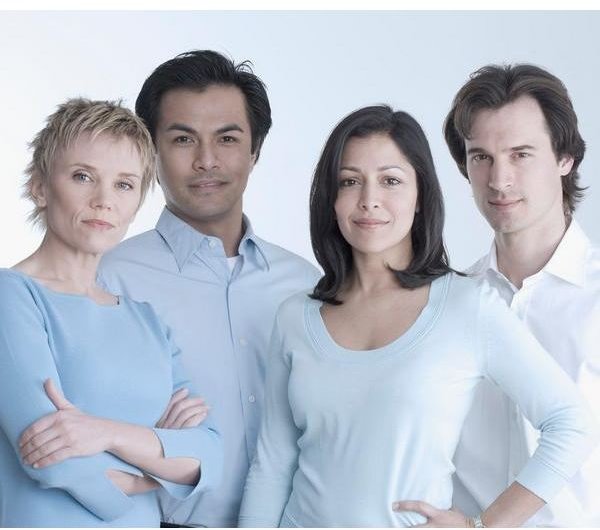Portrait Photography Technique for Digital Photographers
Portrait Lighting Techniques
The most important thing to get right in order to get great digital photography portraits is lighting. The first step is to avoid using the built-in flash. Good digital cameras for portrait photography have attachments for external flashes that can provide much better lighting than the standard pop-up flash. For example, Canon DSLRs offer an attachment for a Speedlite 430EX external flash and other flashes. These flashes can be attached directly the camera when necessary or used as a detached flash with the proper cable.
For quick digital portrait photos on the go, consider attaching a diffuser to your flash accessory attached to your camera top. While not ideal, the diffuser will help avoid the harsh light and dark shadows that come from using the pop-up flash. If indoors, and the ceiling is suitable, consider angling your flash up to provide a softer and more flattering bounce-flash to light your subject.
Obviously, a professional photography studio with a full-sized lighting setup provides all the proper lighting. However, a solid home photo studio setup can provide great results as well. If you plan to take a lot of portrait pictures, you may be interested in how to build a home photography studio.
Digital Portrait Camera Settings
Another important portrait photography technique for taking good digital portraits is to use the proper camera settings for portraits. One important setting to use is the aperture priority mode on your DSLR. Using a wider aperture on your camera reduces the depth of field making the background behind your subject less distracting. When taking portraits in a studio environment with a portrait backdrop, setting the aperture is less important. However, when taking pictures on the go without control of the background, or when taking portraits outside, a wide aperture can ensure that the focus of your photo is your subject and not the sprinklers running behind them.
Setting the proper ISO setting on your digital camera can also help. Higher ISO settings require less light for the same shutter speed. A higher ISO can make the flash unnecessary for a good exposure without reducing the speed of the shutter to the point where there might be some camera shake. A higher ISO is a must for on-the-go pictures.
Portrait Photography Tips
Use a tripod. While a tripod may make it more difficult to capture different angles of some subjects, for standard business portraits, a tripod can be a huge advantage.
Many business people prefer to have a portrait for business purposes taken in their office. This provides both some context for the shot, as well as a professional look. However, unless your subject is a high ranking executive, chances are that their office will not be big enough for a full lighting setup. If you are lucky, you might be able to get away with simplified portrait lighting, but even that might be impossible in some scenarios. In that case, a tripod allows for a tack-sharp picture without the need to resort to harsh on flash lighting or a noisy ISO setting.
Finally, a critical portrait photography technique is to be sure to use flattering poses for your subject. Portrait photography poses do not have to all be the same, but certain tips can help ensure that you get the best pictures. First, be sure that the subject is facing up to the camera. Many people have a tendency to lower their head in an effort to the look into the lens. This can result in an unflattering shadow under the subject’s nose, particularly on those with larger noses. Additionally, subjects looking down can create a double chin, even when one doesn’t normally exist.

For group portraits, be sure to keep everyone’s heads close together lest an unforgettable space distract from an otherwise great shot. Be careful when shooting non-romantic portraits, however, that the subjects move closer together rather than tilting their heads in. Heads tilted together look romantic whether they are or not.
Above all, be sure to have fun. A tense subject is a difficult subject. If the photographer seems unworried and casual, the subject will respond accordingly. So, get your settings right and your composition setup just the way you want it, and then let loose. Remember, digital pictures are free. Shoot plenty of shots in each poses and with each look and you’ll have plenty of good portraits to choose from.
Images courtesy of ArcticLlama Freelance Writing and Microsoft clipart gallery.
